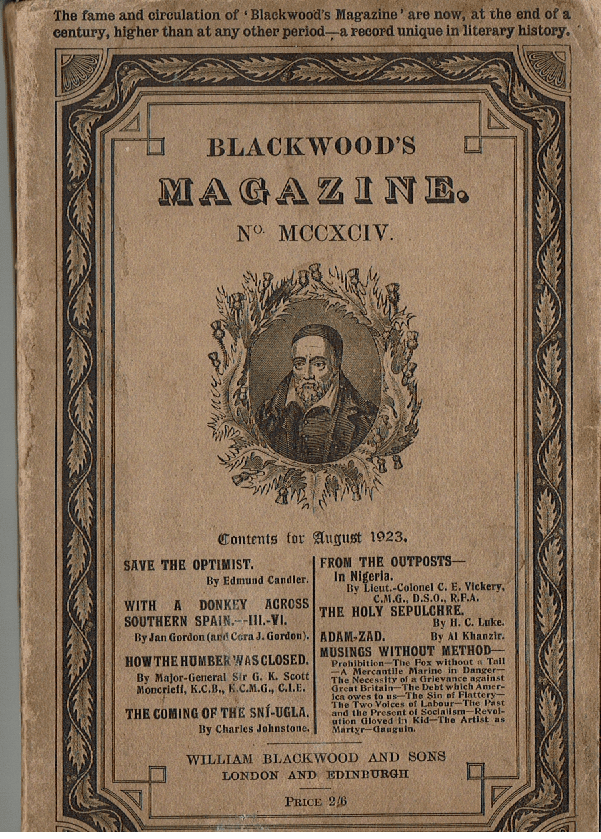
A few years ago I was kindly given some old documentary stuff, generally about the Humber Estuary in some context or another. One item was an A3 magazine published in August 1923, one of a long-running series entitled Blackwood’s Magazine. Its remit seems to have been stories from around the world, these with good provenance as written by experts in their field. One of the seven articles in this particular edition was intriguingly entitled ‘How the Humber was Closed’. Although the title proved somewhat misleading (except in the sense of closed to enemy vessels) it told the story of the building of the two round-based Humber forts built out in the waters at the mouth of the Estuary in the latter part of the Great War. The author, Major-General Sir George K. Scott Moncrieff (1855-1924) had a career in the British Army in Asia and from 1911-1918 was Director, Fortifications and Works at the War Office (this biographical information from my own research). Although the two forts, commonly named after the mudflats on which they were constructed, Hail and Bull, were not completed until just after the end of the Great War they stand today, over a century later, as evidence of the capabilities of building technology in their day and in problematic environments. As regards comparisons elsewhere there are forts in a similar location at Portsmouth and indeed the article references them at one point.
The decision to build the two Humber ports dates from 1912, partly because existing heavy guns on Spurn Point did not have sufficient range to defend the deep-water channel off the coast of Grimsby. Also, the writer referred to the need to ‘protect the oil tanks of Immingham’. A curious reference as it seems that Immingham (Killingholme nearby) already had crude oil storage tanks by the year that Immingham Dock was officially opened by King George V in 1912. Evidence of early storage of oil, presumably from the Arabian peninsula, this region still then part of the Turkish (Ottoman) Empire. Clearly an issue that needs further research.